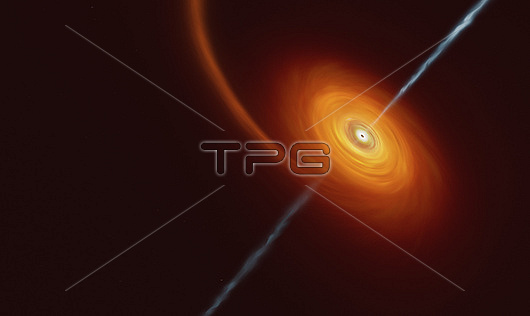
Illustration depicting how it might look when a star approaches too close to a black hole, where the star is squeezed and ripped apart by the intense gravitational pull of the black hole. Some of the star's material gets pulled in and swirls around the black hole forming a disc (orange). In rare cases, such as this one, jets of matter and radiation are shot out from the poles of the rotating black hole. In February 2022 a survey telescope detected an unusual source of visible light in an event named AT2022cmc. This prompted the European Southern Observatory (ESO) to study this phenomenon in more detail using their Very Large Telescope (VLT) and they determined this was the furthest example of such an event to have ever been observed. The light produced from AT2022cmc began its journey when the universe was about one third of its current age.
| px | px | dpi | = | cm | x | cm | = | MB |
Details
Creative#:
TOP29153793
Source:
達志影像
Authorization Type:
RM
Release Information:
須由TPG 完整授權
Model Release:
Not Available
Property Release:
Not Available
Right to Privacy:
No
Same folder images:
Restriction:
This image may not be used by or to promote the arms, nuclear power or tobacco industries or any religious organisation, or in any discriminatory way, or to imply the endorsement by ESO of any product, service or activity

 Loading
Loading